
Over a career spent as a boatbuilder and latterly as a freelance journalist, I have noticed that some owners of sportier yachts tend to trade up to bigger or more modern models on a fairly regular basis. And this was great for business, of course, when I was building and selling sportier yachts. However, owners of heavier and older models – many termed as motor sailers – tend to stick with what they’ve got for a long time. Indeed, often forever.
Part of this phenomenon could be down to fashion. Each year volume-production performance cruisers get wider, sprout chines and Skegness twin rudders, pack in more accommodation, have shorter chord keels and move towards flatter underwater shapes.
On the other hand heavier yachts with longer keels, protected helm positions, moderate beam and sea-kindly hull shapes tend to stay the way they always were. What’s more, very few are now built. So there’s scant chance of trading up to a new boat of this type even if you want to.
Much of this is down to price. Such yachts are not suited to speedy series production. They take longer to build so cost more. And of course weight comes into the equation.
My Dutch distributor once stuck a poster on one of his heavier cruisers (not our Hunter) at the HISWA boat show. Dutch visitors studied this... then burst out laughing. So I asked him to explain what his poster said. He replied “It helps clients understand the facts of life. It says ‘yachts
Three British motor sailers are like potatoes. The more they weigh, the more they cost’.”
And he’s right.
この記事は Practical Boat Owner の Summer 2020 版に掲載されています。
7 日間の Magzter GOLD 無料トライアルを開始して、何千もの厳選されたプレミアム ストーリー、9,000 以上の雑誌や新聞にアクセスしてください。
すでに購読者です ? サインイン
この記事は Practical Boat Owner の Summer 2020 版に掲載されています。
7 日間の Magzter GOLD 無料トライアルを開始して、何千もの厳選されたプレミアム ストーリー、9,000 以上の雑誌や新聞にアクセスしてください。
すでに購読者です? サインイン

Orca sink yacht in Strait of Gibraltar
Spain's maritime rescue service, Salvamento Maritimo, has reported that a 15m (49ft) yacht sank in Moroccan waters in the Strait of Gibraltar following interaction with a pod of orca.

No kill cord or lifejackets were worn during fatal powerboat crash
A kill cord and lifejacket are useless unless worn-that's the warning from the Marine Accident Investigation Branch (MAIB), following its investigation into a powerboat crash that killed a 32-year-old woman and five-year-old girl on 2 October 2022.

Multihull sail work
Brush up on multihull sailing skills before heading off on charter with Gavin Le Sueur's guide to spinnaker handling, tacking and gybing

Five top causes of engine failure and how to prevent them
Jake Kavanagh talks to Sea Start marine engineer Nick Eales about how to avoid the five major causes of an engine breakdown at sea
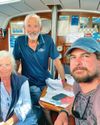
Sail the Atlantic with strangers
Would you sail across the Atlantic with someone you've just met? Ali Wood meets the cruising crews who've done just that

IZIBoat: simple sailing
Rupert Holmes sails an innovative catamaran design intended to widen participation in sailing among those with little time to get on the water in more conventional craft
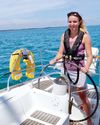
30 WAYS TO GET AFLOAT
From tall ships to small dinghies, you needn't own a boat to sail. Ali Wood looks at the options, and how skippers can also find crew
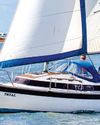
Boats for restoring under £20,000
Duncan Kent picks the best sub-35ft sail and power boats to look for when aiming to undertake a restoration on a budget
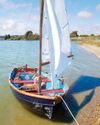
Seaworthy dinghies for less than £500
For low cost traditionally-styled GRP trailer-sailers, consider the Foreland and the Otter available at bargain basement prices
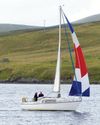
Playing with coloured sails
Maintaining an hourglass-shaped balloon and ratcheting up the log numbers